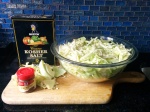Although last year was a banner year for snow peas and cucumbers and other summer garden delights, the tomatoes here were a bust. And even the usually reliable yellow tomatoes didn’t perform well. The cool summer was lovely, but not ideal for our beloved Solanum lycopersicums. While we can’t control the weather, there are some things we can do to tilt the scales towards happy, healthy and productive plants. Here are a few tips to get the tomatoes off and running this year:
- Build good soil – work compost into the soil (homegrown is the best – you know where it came from) before planting, use more of this good compost as a mulch
- Buy tomatoes from reputable nurseries if you didn’t start from seed this year
- Balance hybrids with heirlooms – hybrids are bred to be resistant to wilts and blights and other diseases while heirlooms, grown for their superior taste, are less resistant
- Try grafted tomatoes – hardy root stock and heirloom top
~ Grafted tomatoes are starting to show up in some nurseries, or you can experiment with grafting (more on that topic later) - Wait to plant until the soil has thoroughly warmed before planting as there is no real benefit to getting the plants in the ground when it’s still cool
- Good drainage, good spacing between plants (2-3 feet), good support (here’s how to build a better tomato cage )
- Limit your use of fertilizer – excess fertilizer can lead to vegetative growth but not so much fruit production
- Rotating planting for all members of the nightshade family – not planting tomatoes, peppers, eggplants or potatoes in the same spot where a tomato, pepper, eggplant or potato was planted the previous year (hard to do in small urban garden!)
Other tips for growing good tomatoes?
Here’s hoping that Mother Nature cooperates and helps make this a banner year for tomatoes (and all the other good summer garden veggies). Because there’s nothing in the world like home grown tomatoes!

 “In the spring, at the end of the day, you should smell like dirt” ~Margaret Atwood
“In the spring, at the end of the day, you should smell like dirt” ~Margaret Atwood

 “Lone flower, hemmed in with snows and white as they but hardier far” ( Wordsworth, To a Snowdrop)
“Lone flower, hemmed in with snows and white as they but hardier far” ( Wordsworth, To a Snowdrop)






